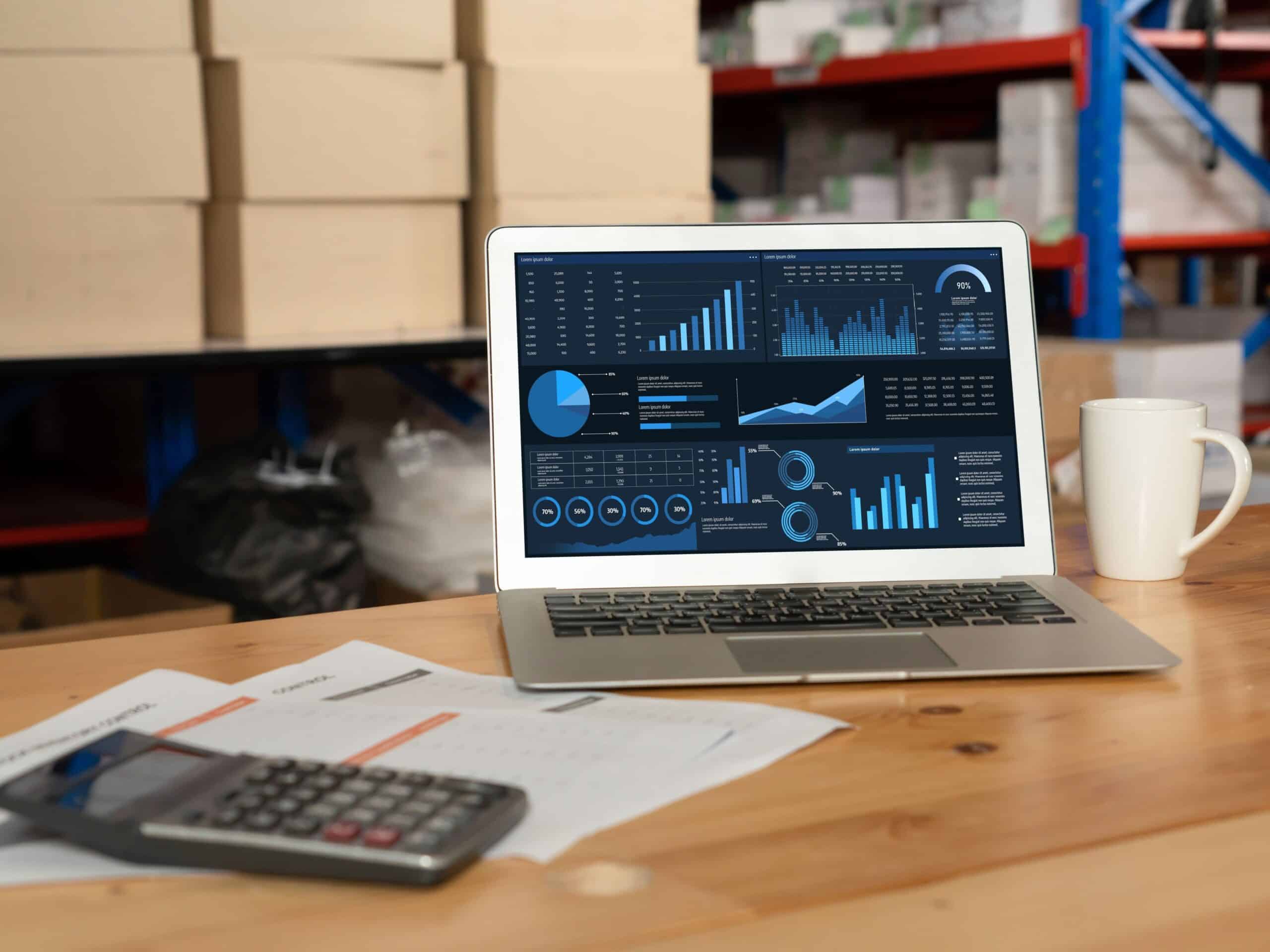What We’ll Unpack in This Article (TL;DR)
If you’re using Microsoft Dynamics 365 in your supply chain business, you must know how to get the most from it, and that you’re up-to-speed on the latest updates.
This article explores:
- Why Dynamics 365 is useful for inventory-based businesses.
- The functionality of Dynamics 365’s new demand planning standalone app.
- Other new features, such as tighter permissions, controls for new products, and qualitative forecasting.
- How StockIQ supplements Dynamics with sharper forecasting, more nuanced controls, inventory policies, and supplier performance monitoring.
Supply chain technology is rapidly advancing, thanks to developments in areas like artificial intelligence (AI) and machine learning. This means that even the solutions you already have in place, like your Enterprise Resource Planning (ERP) and supply chain management systems, are undergoing quick (yet significant) upgrades. If you’re using Microsoft Dynamics 365 in your business, it’s important you know how to get the most from it, and that you’re up-to-speed on the latest changes.
If you want to maximize the Microsoft Dynamics demand planning features, this guide has you covered. It provides you with an overview of the latest tools and updates for Dynamics 365 that are relevant to supply chain businesses, and breaks down how you can integrate them into your daily workflows. It also covers where Dynamics 365 falls short, and where StockIQ’s inventory management solution fills the gaps.
Why is Dynamics 365 Useful for Demand Planning for Inventory-Based Businesses?
As one of the leading supply chain solutions, Microsoft Dynamics 365 has plenty of features which are useful for inventory-based businesses. At first, it can be a little difficult to digest, as this solution is complex. But overall, Dynamics 365 gives you comprehensive capabilities for end-to-end processes that manufacturers, distributors, consumer product groups, and retailers can deploy.
Within the umbrella of Dynamics 365, there’s Microsoft Dynamics 365 Supply Chain Management. Its functionality spans:
- Product information management.
- Forecasting.
- Demand planning.
- Inventory.
- Sales.
- Procurement.
Additionally, it includes features for complex manufacturing, asset maintenance, warehousing, transportation management, and costing. Dynamics 365 segments its supply chain planning and execution capabilities into three categories:
- Demand planning: Features that help with forecasting future sales.
- Supply planning: Including production scheduling, safety stock calculations, planning optimization.
- Supply chain execution: Including pricing, asset management, warehouse management, and procurement.
It’s important to note that Microsoft Dynamics’ demand planning features are new: up until now, it did not have a designated solution for this function, and the lines were blurred between the three categories listed above.
How Does Microsoft Dynamics 365 Support Demand Planning?
Microsoft’s latest updates to Dynamics 365 demand planning capabilities are significant. Most notably, there is now a standalone demand planning app, which is a collaborative forecasting tool that integrates more advanced forecasting algorithms and models, and provides intelligent reports and analytics.
Demand planning in Microsoft Dynamics 365 requires you to take the following five steps:
- Import data, including historical sales data, product data, and warehouse data, into the app.
- Transform your data from tables into time series.
- Create forecasts using different models (including your own Azure Machine Learning model).
- Review and refine forecast. You can adjust values, and model scenarios about how factors like pricing, weather, and promotional events might impact the forecast.
- After your forecast is done, you can export it to any external system that can consume forecasts.
Key Dynamics 365 Feature Details
Here are features that support Microsoft Dynamics demand planning capabilities, which you should take advantage of to improve inventory decision-making.
- New products & end of lifecycle management: Plan for the launch of new products and phase out old ones, and adjust your demand forecasts accordingly to avoid skewed results.
- Tighter permissions: With row-level access, you can control who views and edits your plans, based on roles and responsibilities.
- Qualitative forecasting: Supplement your quantitative forecasts with qualitative insights, such as surveys and experts opinions.
- Planner’s workspace: A customizable dashboard with charts, metrics, and alerts, which you can use to monitor and manage your demand plans more easily.
Another notable feature: Microsoft has made their demand planning tools collaborative, so all demand planning stakeholders can easily work together.
For example, you can:
- Track changes made to forecasts over time, to ensure transparency and traceability.
- Maintain logs of all actions taken within the platform, to meet compliance and accountability requirements.
- Take advantage of embedded Teams experience (if that’s another tool in your stack) and commenting capabilities to facilitate seamless communication.
Also important: this new tool is no-code, planner-centric. It’s designed to help planners quickly build, simulate, and compare different forecast scenarios, without the help of data scientists.
The Role of Artificial Intelligence in Microsoft Dynamics Demand Planning
The applications of artificial intelligence in the supply chain are exploding, with the market projected to grow by the billions in just the next year alone. Microsoft Dynamics 365 is now deploying AI throughout its solution, to drive forecast accuracy and boost productivity. One specific AI-driven tool is Copilot, which is designed to boost the productivity and efficiency of sales, support, supply chain management, finance, and marketing teams.
In general, Copilot can help with tasks like bank account reconciliation, provide communication summaries, and speed up data entry. But it also can be used specifically for demand planning: it can analyze your plans to give you quick, valuable insights across different areas, to improve operational efficiency, increase profitability, and improve customer satisfaction. For example, by asking Copilot questions from a predefined list, you can understand key forecast shifts, trends, outliers, and deviations.
What Other Dynamics 365 Features Are Useful for Inventory Management?
Aside from Dynamic’s designated demand planning tools, there are other features and capabilities that are useful for demand planning and inventory management.
Inventory Management
Microsoft Dynamics 365 wasn’t purpose-built for inventory management. But it does pack plenty of inventory-centric features that help with supply chain functionalities:
- Inbound operations (or order arrival).
- Quality assurance (to help guarantee a high level of product quality in your business).
- Inventory journals (to post various types of physical inventory transactions).
- Outbound operations (linking sales order lines and transfer order lines with the outbound picking processes).
Asset Management
This advanced module is for managing assets and maintenance jobs in D365 Supply Chain Management. It includes features for preventative maintenance, budget, analytics, and asset history, so you can efficiently manage and service your equipment.
Procurement & Sourcing
The procurement and sourcing module includes functionality for procuring products, receipts, invoicing, and processing of payment with vendors. Useful features include product catalogs (which you can set up to guide product selection), spending limits (to constrain requisition spending), and purchase order creation.
How Does StockIQ Supplement Dynamics 365 for Demand Planning?
While Microsoft Dynamics 365 is a powerful, streamlined supply chain management solution, there are some significant gaps in its capabilities. A dedicated supply chain planning suite like StockIQ adds planning depth and visibility through forecast analytics, policy optimization, nuanced controls, and supplier performance management, to help D365 users cut excess, raise service, and buy smarter.
Here’s where StockIQ add value beyond Dynamics 365’s native features:
- Sharper forecasting with advanced controls: StockIQ layers advanced statistical models and AI tools to produce more accurate, nuanced forecasts (data from McKinsey shows that applying AI-driven forecasting to supply chain management can reduce errors by up to 50%). For example, you can project inventory on-hand by aggregating SKU-level plans, and can generate customer-level forecasts, viewing projected sales by customer. Also, with the new No Demand and Zero Demand model, you can identify SKUs with no forecasted or historical usage, and prevent overbuying obsolete or end-of-life items.
- Transparent, accurate safety stock: Accurate safety stock calculations are rooted in accurate data. StockIQ ties safety stock to forecasts, and makes the math transparent, so planners and finance can agree on the inventory investment required for a stated customer-service objective.
- Policy designs that match demand behavior: Instead of one-size-fits-all, StockIQ provides ABC and XYZ analysis inventory policies, to help inform ordering decisions.
- Supplier performance you can plan around: With vendor scorecards and lead-time tracking capabilities, StockIQ equips Dynamics 365 users with the intel they need to make better ordering and supplier decisions, based on factors like lead time and on-time rate.
Microsoft Dynamics 365 is a powerful tool. But we make it better. StockIQ’s industry-leading forecasting engine and inventory planning capabilities give you more insight, controls, and capabilities, helping you maximize end-to-end visibility and make the smartest ordering decisions.
Are you interested in learning how StockIQs supply chain planning suite can supplement the way you use Microsoft Dynamics 365? Contact us today or request a StockIQ demo.

